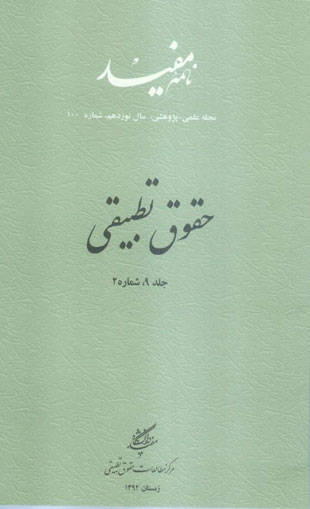Analysis of the Export-Led Growth Theory in Iran
Author(s):
Abstract:
This article seeks to examine the export-led growth theory using Feder (1982) neoclassical growth model for Iran. For this purpose, time-series data released by the Central Bank of Iran for the years (1959-2007) has been used.After the unit root test, in order to investigate co integration between the two economic variables-export and GDP two Engel-Granger and Johansen's methods were used. Then, the causal effects of export growth on the growth of GDP and growth of investment were tested. Finally, the reactions of the variables to the shocks were investigated by estimation of vector autoregressive model (VAR), using the impulse response function (IRF) and variance decomposition methods.The findings of Engel-Granger's method didn’t confirm the co integration between the variables of the model. However, a co integration vector was found by Johnson's method. Furthermore, the causal relationship from export to GDP was confirmed but it was rejected from export to investment. Impulse response function showed that the response of GDP and export in response of one standard deviation shock has a similar trend. In the way that it regressed to its long run trend after 17 periods. Investment regressed to its permanent period after 8 periods. The findings of variance decomposition showed that 100 percent of the variation of GDP is derived from the variable in the first period and in the second period 91 percent of the variation of the GDP was explained by the variable and 1/3 percent of the variation was explained by investment.
Keywords:
Language:
Persian
Published:
مجله نامه مفید, No. 84, 2011
Page:
59
https://magiran.com/p952698
سامانه نویسندگان
مقالات دیگری از این نویسنده (گان)
-
Analysis of the Role of Subsidized Government Spending on Economic Well-Being in Iran: Application of Symmetric and Asymmetric Approach
*, Ahmadreza Ahmadi, Mehdi Hasanpour Varkolaei, Mohammadreza Zare Chamazkoti
Economic Research, -
Shadow Price of Water and Agricultural Competitiveness: An Empirical Study for Iran’s Selected Agricultural Products Using System Dynamics
Saeed Rasekhi *, Saber Shakeri, , Atena Salmanpour Ahmadi
Quarterly Journal of Applied Economics Studiesin Iran,



